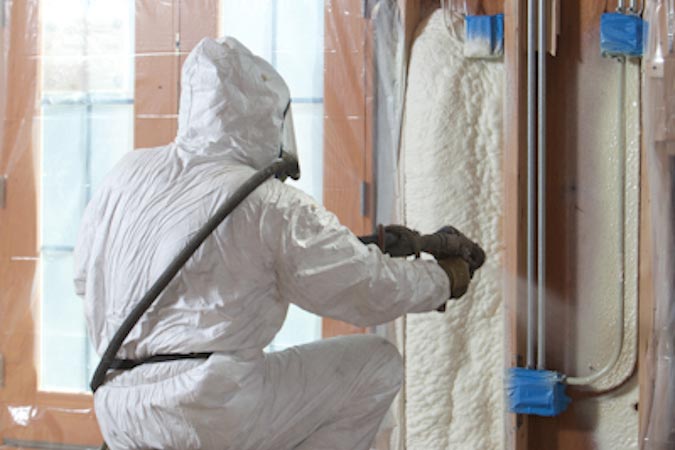The passage below is an excerpt from testimony given to the General Law Committee in the state of CT addressing the problems with spray foam insulation.
Individual cases vary, and whilst the specifics here are a travesty, we all need to take note of a few key points:
- Chemicals need to be created and mixed in a controlled environment. Building sites do not count.
- Installers are not properly trained and should not be allowed to handle complex chemical mixtures.
- Failure rates are unknown and the system is rigged to keep it that way.
- Liability is also anyone’s guess.
- So, why are consumers willing to spray hazardous chemicals in a place they call home?
Read below and please change your mind
After the runaround and finger pointing I had enough.

I filed complaints with the Department of Consumer Protection and they sent me to the Consumer Products Safety Council. CPSC sent me to OSHA. OSHA sent me to the EPA. EPA sent me to the Consumer Protection. Consumer Protection sent me to my town building department. Town Building sent me to the Department of Public Health. Department of Public Health sent me to the Consumer Protection Agency. Consumer Protection sent me to the State Building Official. State Building Official sent me back to the town building official. Finally I filed a complaint with the insurance commissioner regarding the treatment received by my installer’s insurer. Colony Insurance estimated to bring the house back to post installation status would cost an estimated $150,000.00.
As you can see not one agency knows who does what or what to do when problems arise from failed spray polyurethane foam insulation. All of the written complaints I filed with these agencies were closed and I was left with the mess to clean up.
This may explain why Spray Polyurethane Foam Alliance (aka, SPFA), Kurt Reisenberg could make a claim to Representative Jutila that the failure rate of Spray Foam Insulation is less than 1/10th of 1 percent.” Mr. Reisenberg claims his rate was established through an informal polling amongst industry manufacturers and installers. He also claims of the one million installations completed, only 6 or 7 made it to the courts. (See exhibit G) This is not an acceptable answer when we speak about chemicals and public safety!
Now you can see why. No one knows what to do in government when Spray Foam Insulation becomes an issue.
In one telephone conversation I had with Marian Heyman form the Connecticut Department of Public Health, she instructed me to “go to the Home Depot and purchase a five gallon bucket, scrub brush and some detergent and to scrub the foam off my walls.” I could not believe what I was hearing. I asked Marian Heyman how many failures they have on file. She stated that she could not tell me the names of the people, only the manufactures which were complained about from the homeowners she does have on file. I never heard from her again. She never provided me anything even when I issued an FOI request to DPH. What I did find in the FOI was a statement made about me that said,
“these complaints will never materialize into an investigation.”
You can read the rest on your own via the link below. I’ve got only one question: is it a coincidence that Erin Brockovich is airing in the background?
https://www.cga.ct.gov/2013/GLdata/Tmy/2013HB-05908-R000221-Richard%20Beyer-TMY.PDF

Keep up the good work exposing foam based insulation. EPS insulated walls is a very large scale problem in our part of the world https://www.abc.net.au/news/2019-02-21/cladding-crisis-spreads-to-suburbs-materials-banned/10832164?pfmredir=sm Then we have the environmental impacts in landfill. Scientific studies confirm a minimum time period of one million years to break down, some say never. Landfill waste is measured in weight. Don’t be fool by this statistic. EPS is impacting the landfill / environment by volume and leaving no room for biodegradable products. A rather large problem that is by no means sustainable.
This was super informative. I’ve been offering spray foam insulation to my customers for a while but I was totally unaware that it could potentially cause so many problems. I’ll start looking at other options. Do you have any thoughts on denim insulation?
Denim insulation would seem like a reasonable solution but the fiber lacks integrity. Given the inevitability that moisture will infiltrate an insulated cavity and cotton’s propensity to create mold and mildew means this product is a nice idea until pushed against real efficacy. Thanks!